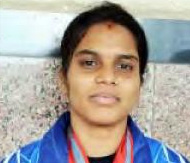by Prof. A.V. Narasimha Murthy, former Head, Department of Ancient History & Archaeology, University of Mysore
All roads lead to Mysore, the royal city, because it is the time of Navaratri also called Dasara and Mysore is glittering with electric lights. Infact ancient Dasara of Vijaynagara times was glittering with gold and gold but our Dasara has substituted electric bulbs in place of gold. Even this is a luxury and a symbol of pomp. Actually it is called Sharannavaratri or Navaratri during the autumn season as different from Vasantha Navaratri which is celebrated during spring. In the former, nature also plays a role with good climate and the season of flowers and hence flower show is also held during this period. Navaratri is basically the celebration in honour of the mother Goddess, called by different names according to the role assumed by her in destroying the wicked demons who were tormenting the good people. It has been so arranged by our ancient people that the pre-navaratri fortnight is called Pitrupaksha or the fortnight of the ancestors culminating in the Mahalaya Amavasya on which day even the poorest of the poor offer prayers to their ancestors. Thus the ancestors are worshipped first and then comes the Navaratri, the worship of the mother goddess.
According to mythologies, the goddess amalgamated the power and prowess from gods Vishnu, Shiva, Brahma and Agni so that she could destroy the powerful demons. These demons had obtained boons from the same gods that they should not be killed by ordinary methods and persons. Hence the goddess had to assume special forms by ingenious combinations which could not have been imagined by the demons while requesting the boons. Thus the arrangement was such that the validity of the boons was not disturbed and vanquishing of the wicked demons also took place. The work Devimahatme describes in details the various forms of supreme goddess like Mahishamardini (demon Mahishasura), Kali (Madu and Kaitabha), Chamundeshwari (Chanda and Munda), Raktadanti (Demon Danti), Durgi (demon Durga), Bhramani (demon Aruna) etc. Of all these goddesses, Mahishamardhini, Durgi and Chamundeshwari are more popular. In fact as it is well known, our city Mysore got the name from Goddess Mahishasuramardhini, the vanquisher of the demon Mahishasura. Its ancient name was Mahishapura or Mahishuru which got corrupted by the British as Mysore. In fact southern Karnataka was referred to as Mahishamandala and this name found mentioned during the period of Ashoka almost 2,200 years ago.
Another significant feature of Navaratri, is the exalted position given to Kannike or unmarried girls. They are supposed to be personifications of the Goddess of Navaratri. They are to be worshipped as Kumari, Trimati Kalyani, Rohini, Chandike, Shambhavi, Durgi, Subhadra and Kali. Each one of these forms was worshipped and presents given to them and it is believed that the great Goddess would be pleased by the worship of the unmarried girls.
It is of interest to note that the Goddess of Navaratri was worshipped by epic heroes also. It is said that Sri Rama worshipped the goddess before going to fight Ravana and achieved success. Mahabharata heroes also worshipped the goddess and took out their weapons of war which they had hidden under a Shami (banni) tree and started their victorious march. Our kings of historical dynasties were not slow to imitate Sri Rama and the Pandavas in this respect. Unfortunately the history of Navaratri festival celebrated by the pre-Vijayanagar dynasties is not known to us as it has not been recorded. But we are fortunate that many foreign travellers like Nikitin, Barbosa, Abdul Razzak, Domingo Paes, Nuniz etc. who had the good fortune of participating in the Dasara festival as special invitees of various Vijayanagara kings have described in glorious terms even the minutest details of Dasara held during the period.
The most luxurious Dasara of the Vijaynagara period was held during the reign of Krishnadevaraya, the most distinguished emperor of this dynasty. The foreign traveller Domingo Paes was an eye witness to the Dasara of Krishnadevaraya which was celebrated for nine days from Sept. 13 to 21, 1529 AD. Its luxury and pomp can be estimated by the presence of gold images of gods and goddess and the rich gold ornaments worn by royalty and common women who attended the celebration. The speciality was that celebrations took palace both in the day time as well as during nights. One the tenth day called Vijayadashami, Krishnaradevaraya held a review of the army of the State. It was an occasion for Krishnadevaraya to exhibit his military strength in public.
The Wadiyars of Mysore are the cultural successors of Vijayanagara and hence celebrated Dasara on the pattern of Vijayanagara. Raja Wadiyar (1578-1617) celebrated Dasara at Srirangapatna and codified the rules and regulations in this regard. He even ordered that Dasara should not be stopped even if there was a death in the royal family. During the days of Kanteerava Narasaraja Wadiyar, Dasara became more glorious. Dasara became a grand affair during the period of Krishnaraja Wadiyar III in Mysore.
During the period of Krishnaraja Wadiyar IV Dasara became a great spectacle and attained fame even abroad and it became world famous. Then came Jayachamarajendra Wadiyar who continued the traditional Dasara in a glorious manner. The last Dasara of this type was held in the year 1969.
The Vijayadashami procession held on 10th day popularly known as Jambo Savari was the greatest attraction. Govinda Vaidya (1648) refers to it as Jambi Savari, meaning a procession to Banni tree. It is said that there was an elephant in London Zoo and it was called Jambo and hence British called it Jumbo Savari and in course of time it became Jumbo Savari.
This is all history and at present Dasara is celebrated as Naada Habba with the procession of the idol of Chamundeshwari.
The government is trying to make it more attractive by innovative additions. But is lacks religious fervour and traditional glory of the days of the Wadiyars. In spite of all these changes, Mysore Dasara is attracting people in large numbers. That is the magic of the word Dasara.
source: http://www.starofmysore.com / Star of Mysore / Home> Feature Articles / by Prof. A.V. Narasimha Murthy, former Head, Dept. of Ancient History & Archaeology, University of Mysore / October 12th, 2013





